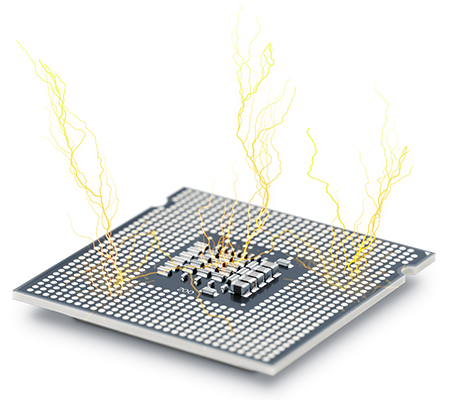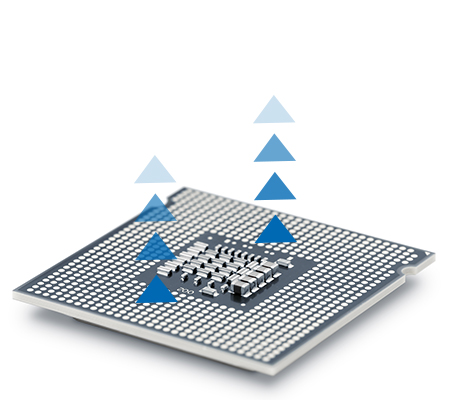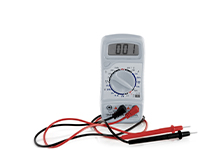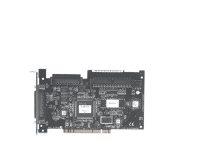Humidification for the electronics industry
The dryer the air, the quicker electrostatic charges occur and the stronger they are. Consistent protection against ESD (electrostatic discharge) has become imperative in production plants, especially due to the increasing miniaturization of electronic components. Electronic devices, printed circuit boards, and data are extremely sensitive to electrostatic discharges.
Electronic components can be damaged at a electrostatic discharge of just 100 V. However, electronic charges can be curbed by increasing the humidity of the air.
The damp air settles on ions, making them heavier and less mobile in the electrical field. With controlled humidification of the air, a film of moisture can form on the surfaces, making them conductive, despite the low density, and preventing a collection of electric charges.
 Dry air below 40% RH can cause
Dry air below 40% RH can causeelectric potential differences
 At 50–55% RH, electrical charges can
At 50–55% RH, electrical charges can dissipate due to the increased conductivity
Static charges
Static charge can occur during maintenance work, or on ungrounded components in the data center. This can lead to uncontrollable discharge shocks and the destruction of sensitive electrical components.
At a relative humidity of 50–55%, damp air increasingly settles on ions, making them heavier and less mobile in the electric field. The conductivity of the air and the material surfaces then increases, so that electrical charges are dissipated, which prevents the formation of potential differences.

Electrical test lab


Production of wafers


Production of microchips


Hammam, Caldarium and Rhassoul
A hamam is a steam bath in which a special bathing ceremony is held,
and is an important part of Islamic bathing and physical culture.
The focus is...

Steam bath and steam shower
Nowadays, many hotels and health clubs offer spa facilities for the well-being of their guests and members:
A swimming pool, a sauna and more and mor...

Office Rooms
Employees must feel comfortable as they work. Motivation, efficiency, and health can be improved through contemporary design of the workplace. The ri...

Fashion Industry
An “electric shock” when touching a clothes rail; hair that takes on a life of its own when trying on clothes. Dry air can really spoil the fun of go...

Food Storage
Hygroscopic (moisture-drawing) foods interact with ambient humidity. They either absorb water vapor from their environment or give off water vapor.
T...

Data Center
In data centers, humidifiers primarily ensure that electrostatic discharges and damage to sensitive hardware are prevented.

Automotive Industry
To achieve optimum results, paintwork must be applied to vehicles in optimum environmental conditions. Crucially, humidity and temperature must meet ...

Call Centers
A good room air humidity in a call center not only ensures the employees’ well-being, but also their performance and health. Today, respiratory illne...

Museums
Museums are charged with the task of preserving treasures of humanity and art. The innumerable, often unique and irreplaceable exhibits are worth man...

Aerospace Industry
Reliable functional quality of all components is essential for the aerospace industry. Inadequate humidity can lead to damage and faults in electroni...